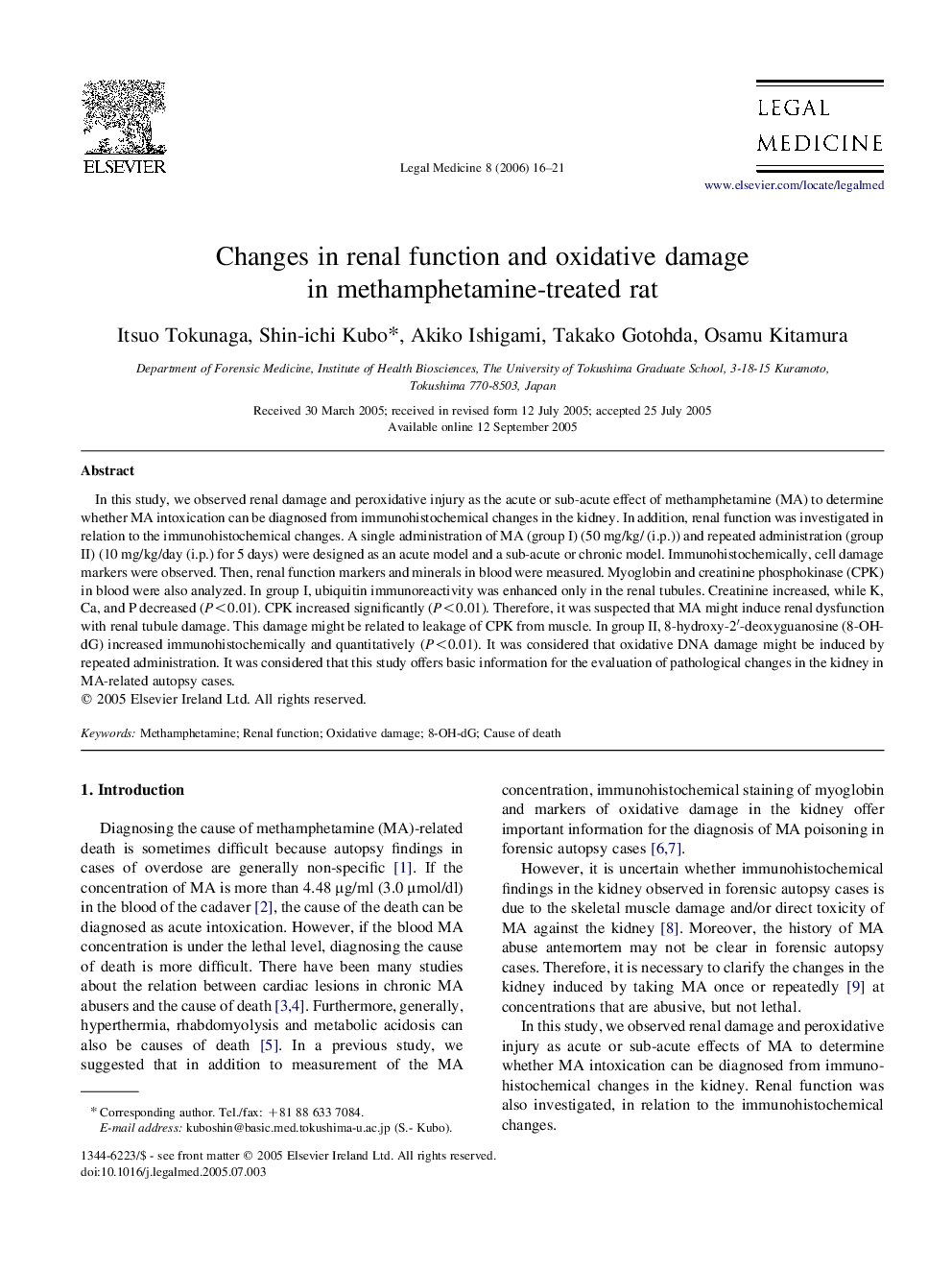| Article ID | Journal | Published Year | Pages | File Type |
|---|---|---|---|---|
| 104264 | Legal Medicine | 2006 | 6 Pages |
In this study, we observed renal damage and peroxidative injury as the acute or sub-acute effect of methamphetamine (MA) to determine whether MA intoxication can be diagnosed from immunohistochemical changes in the kidney. In addition, renal function was investigated in relation to the immunohistochemical changes. A single administration of MA (group I) (50 mg/kg/ (i.p.)) and repeated administration (group II) (10 mg/kg/day (i.p.) for 5 days) were designed as an acute model and a sub-acute or chronic model. Immunohistochemically, cell damage markers were observed. Then, renal function markers and minerals in blood were measured. Myoglobin and creatinine phosphokinase (CPK) in blood were also analyzed. In group I, ubiquitin immunoreactivity was enhanced only in the renal tubules. Creatinine increased, while K, Ca, and P decreased (P<0.01). CPK increased significantly (P<0.01). Therefore, it was suspected that MA might induce renal dysfunction with renal tubule damage. This damage might be related to leakage of CPK from muscle. In group II, 8-hydroxy-2′-deoxyguanosine (8-OH-dG) increased immunohistochemically and quantitatively (P<0.01). It was considered that oxidative DNA damage might be induced by repeated administration. It was considered that this study offers basic information for the evaluation of pathological changes in the kidney in MA-related autopsy cases.
